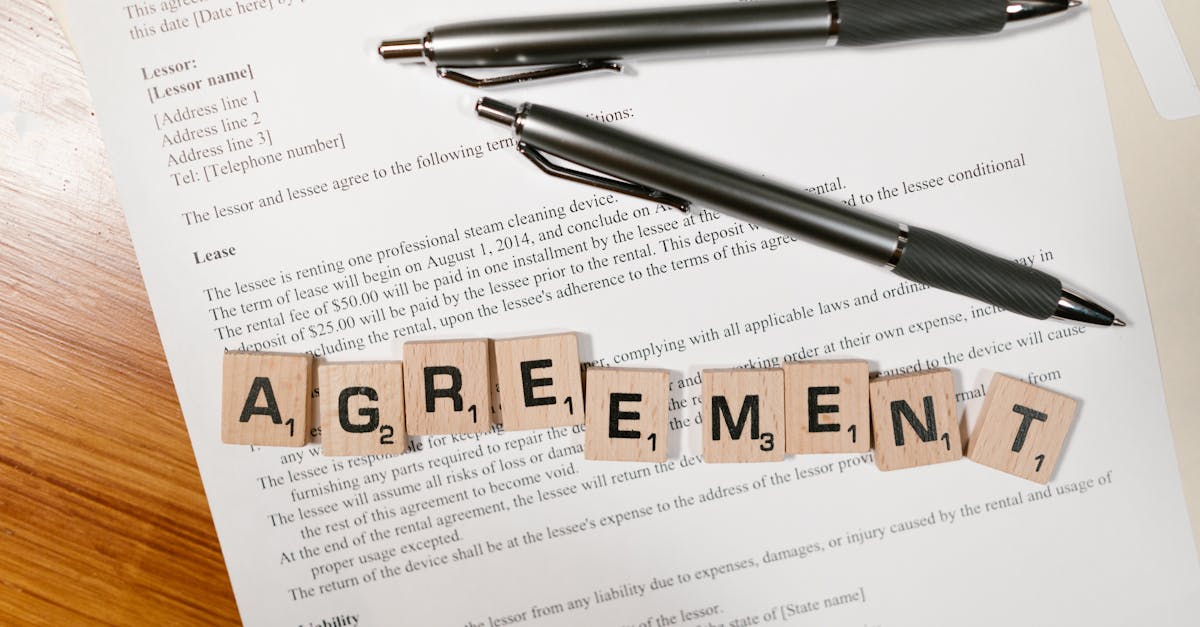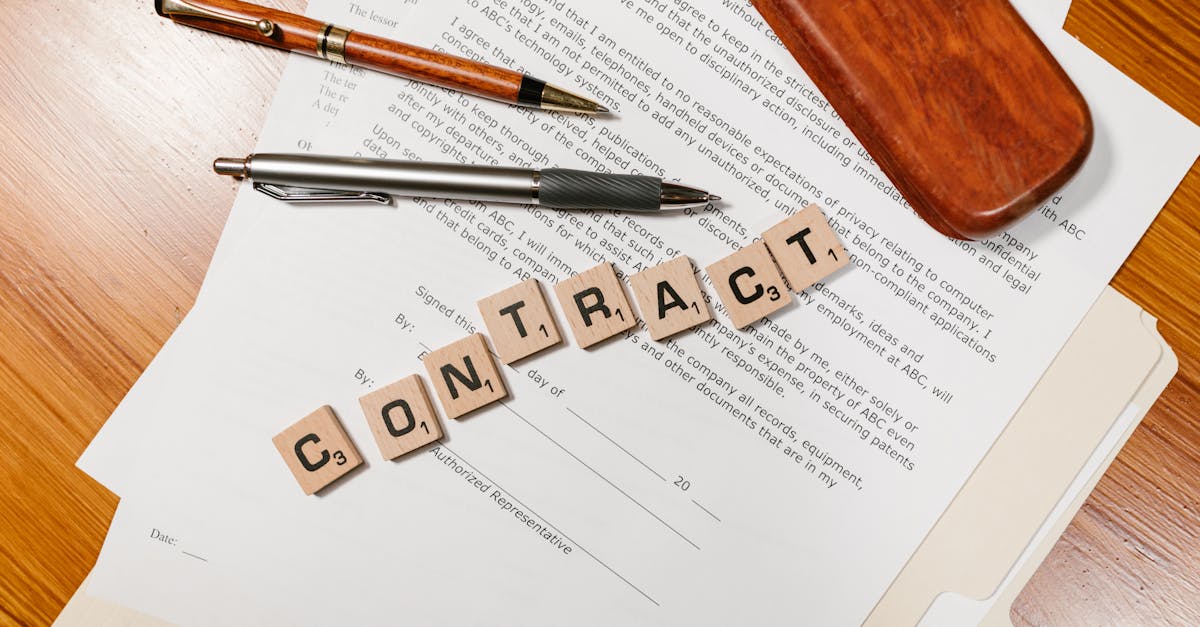
The Ultimate Guide to Automated Commercial Lease Agreements for Modern Businesses
1. Introduction
Managing commercial lease agreements can feel like navigating a dense forest of paperwork, legal complexities, and endless administrative tasks. For modern businesses, keeping pace with growth often means wrestling with an increasing volume of leases, leading to inefficiencies, potential errors, and significant time drains for your legal, HR, or compliance teams.
In this landscape, leveraging technology isn’t just an option—it’s a necessity. This is where document automation steps in, transforming what was once a laborious process into a streamlined, efficient, and highly accurate operation. This ultimate guide will explore why automating your commercial lease workflows is crucial, detail the key features to seek in legal software, provide a step-by-step process for implementation, and outline best practices to ensure compliance and mitigate risk, ultimately empowering your business to thrive.
2. Why automation is crucial for streamlining commercial lease workflows
Managing commercial leases can be an incredibly time-consuming and error-prone process. From drafting initial agreements to managing renewals and compliance, the sheer volume of paperwork and detailed clauses demands meticulous attention. This is where legal automation becomes not just beneficial, but crucial for any growing business.
Automating your commercial lease workflows significantly reduces the manual effort involved. Instead of spending hours on repetitive tasks like data entry or clause insertion, your team can focus on strategic activities that add more value. This shift enhances overall productivity and allows your legal or compliance team to manage a higher volume of leases without increasing headcount.
Moreover, document automation software minimizes the risk of human error. Typos, missing clauses, or incorrect data can lead to significant legal and financial repercussions. Automated systems ensure consistency and accuracy across all documents, adhering strictly to predefined templates and legal standards. This proactive approach to risk management is invaluable in today’s complex regulatory environment.
Finally, the speed at which you can generate and process leases is dramatically improved. What once took days or even weeks can now be accomplished in hours. This agility allows businesses to respond more quickly to market demands, finalize deals faster, and maintain a competitive edge. Effective legal software is an investment that pays dividends in efficiency and reduced operational costs.
3. Key automation features to look for in legal document software
Essential Features for Your Legal Automation Software
When evaluating legal software for your commercial leasing needs, look for specific features that will truly transform your operations. The right legal automation software should offer robust capabilities that streamline every stage of the leasing lifecycle.
- Intelligent Document Generation: The ability to create complex lease agreements from dynamic templates is paramount. This means you can input specific data (e.g., tenant name, property address, lease term) and the system automatically populates the document, ensuring all relevant clauses and schedules are included. This significantly speeds up document creation and reduces manual input errors.
- Workflow Automation: Look for features that allow you to define and automate approval processes, reminders for critical dates (like lease expirations or rent reviews), and task assignments. This ensures that no step is missed and that all stakeholders are aware of their responsibilities.
- Version Control and Audit Trails: Maintaining a clear history of all document changes and who made them is vital for compliance and dispute resolution. Your chosen software should offer comprehensive version control and detailed audit trails.
- Integration Capabilities: The software should seamlessly integrate with your existing systems, such as CRM, accounting software, or other law firm case management software like lawmatics. This prevents data silos and ensures a unified flow of information across your organization.
- E-Signature Integration: Built-in or integrated e-signature capabilities drastically cut down on signing times, making the lease execution process more efficient and legally sound.
- Secure Document Repository: A centralized, secure platform for storing all your lease documents provides easy access and robust data protection, which is critical for sensitive legal information.
Investing in tools that offer these capabilities will equip your team with powerful automation tools, setting a strong foundation for efficient and compliant lease management. Many solutions contribute to an overall robust legal automation system.
4. Step-by-step process: Automating your commercial lease agreements with Formtify
Automating Commercial Lease Agreements with Formtify: A Step-by-Step Guide
Implementing legal automation for your commercial lease agreements might seem daunting, but with the right platform like Formtify, it’s a straightforward process. Here’s how you can leverage Formtify to transform your leasing operations:
- Identify Your Core Lease Templates: Start by identifying the most common commercial lease agreements your business uses. These will be the foundation for your automated templates. Consider variations for different states or property types.
- Digitize and Tag Your Templates: Upload your existing lease templates into Formtify. The platform allows you to convert these documents into dynamic templates by identifying key variables and clauses. This is where the power of document automation comes into play, turning static documents into intelligent forms.
- Define Data Inputs: For each variable (e.g., tenant name, lease term, rent amount), define where the data will come from. This could be manual input, integration with an existing database, or selection from predefined options.
- Set Up Conditional Logic: Formtify enables you to embed conditional logic. For example, if a specific clause is required for a certain type of property, the system can automatically include or exclude it based on your input. This ensures accuracy and compliance without manual review.
- Establish Approval Workflows: Design and automate the internal review and approval process. Specify who needs to sign off on the lease before it’s finalized, ensuring compliance with internal policies and legal requirements.
- Generate and Execute: Once the template is set up and data is entered, Formtify can instantly generate the complete, accurate commercial lease agreement. You can then use integrated e-signature capabilities for quick and secure execution. For an example of how a templated agreement looks, you can check out a Maine commercial lease agreement on Formtify.
By following these steps, you harness the power of a dedicated legal automation system, significantly reducing the time and resources spent on commercial lease management. This approach exemplifies how effective legal automation software can truly make a difference.
5. Popular commercial lease templates for different states
Navigating State-Specific Commercial Lease Templates
One of the critical aspects of commercial leasing is understanding that legal requirements often vary significantly by state. A lease agreement that is perfectly valid in one jurisdiction might be non-compliant or missing essential clauses in another. This complexity underscores the importance of using state-specific commercial lease templates.
While the core structure of a commercial lease agreement shares similarities across the U.S., specific provisions related to landlord-tenant laws, notice periods, security deposit regulations, dispute resolution mechanisms, and even property tax responsibilities can differ. For instance, commercial lease agreements in California have different disclosure requirements than those in New York or Texas.
Robust legal software, particularly document automation software, is designed to accommodate these variations. Platforms like Formtify offer a library of templates tailored to specific state regulations, ensuring that your agreements are not only efficiently generated but also legally sound and compliant wherever your properties are located.
When selecting your legal automation system, ensure it has the flexibility to handle multiple jurisdictions. This capability is vital for businesses operating across state lines or those with diverse real estate portfolios, helping to mitigate legal risks and ensure adherence to local laws. Always double-check that your chosen template aligns with the latest state-specific legal updates.
6. Best practices for reducing risk and ensuring compliance
Best Practices for Risk Reduction and Compliance in Automated Leasing
While legal automation offers immense benefits, it’s crucial to implement it with a strong focus on risk reduction and continuous compliance. Adhering to best practices ensures that your automated leasing process is not only efficient but also legally robust.
- Maintain Human Oversight: Automation streamlines processes, but it doesn’t eliminate the need for expert human review. Key commercial lease agreements, especially those involving complex negotiations or high value, should always undergo a final review by a qualified legal professional. This combines the efficiency of document automation with essential legal scrutiny.
- Regular Template Updates: Legal frameworks are dynamic. Laws change, and new regulations emerge. Regularly update your automated lease templates to reflect the latest legal requirements and best practices. Your legal automation software should facilitate easy updates and version management. This aligns with the “Regulatory Framework Surrounding Legal Automation” subtopic.
- Robust Data Security: Commercial lease agreements contain sensitive business and financial information. Ensure that your chosen legal automation system employs advanced data encryption, access controls, and compliance with data privacy regulations (e.g., GDPR, CCPA).
- Comprehensive Training: Provide thorough training to all personnel who interact with the legal software. Understanding how the system works, how to input data correctly, and how to identify potential issues is key to maximizing its benefits and minimizing errors. This relates to “Training and Skills Needed for Legal Automation”.
- Audit Trails and Reporting: Utilize the audit trail features of your legal software to track every action taken within the system. This provides transparency and accountability, which are critical for demonstrating compliance during audits or in legal disputes.
- Standardize Processes: Even with automation, having standardized internal processes for lease initiation, negotiation, and execution is vital. This ensures consistency and reduces variability, further enhancing compliance.
By integrating these best practices, your business can fully leverage the power of legal automation while ensuring robust risk management and adherence to all legal and regulatory obligations. This proactive approach elevates your entire leasing process.
7. Summary
In essence, embracing document automation for commercial lease agreements is no longer a luxury but a strategic imperative for modern businesses. By transforming manual, error-prone processes into streamlined, efficient workflows, your HR, legal, and compliance teams can significantly reduce administrative burdens, mitigate risks, and enhance overall productivity. This guide has illuminated the crucial role of automation, highlighted essential software features, and provided a clear path to implementation. Ready to revolutionize your lease management? Discover how Formtify can empower your business by visiting https://formtify.app .
8. FAQs
What is automation in law?
Automation in law, specifically legal automation, refers to using technology to streamline and automate repetitive tasks within legal processes, such as drafting documents, managing workflows, and handling data. For commercial leases, this means transforming the creation, review, and management of agreements from a manual, time-consuming process into an efficient, automated one. It aims to reduce human error and free up legal professionals for more strategic work.
What is the best legal automation software?
The “best” legal automation software depends on your specific needs, but top solutions generally offer intelligent document generation, robust workflow automation, version control, integration capabilities, and e-signature functionality. Platforms like Formtify are designed to provide comprehensive tools for automating commercial lease agreements, ensuring accuracy and compliance across various state-specific requirements. Look for a system that can adapt to your business’s unique legal workflows and offers strong security features.
Is there a legal AI tool?
Yes, artificial intelligence (AI) is increasingly integrated into legal automation tools. While this article focuses on document automation, AI can enhance legal processes by assisting with tasks like contract review, legal research, and predictive analytics. The evolution of legal software often incorporates AI to provide more sophisticated automation, allowing for greater efficiency and deeper insights into legal documents and workflows.





